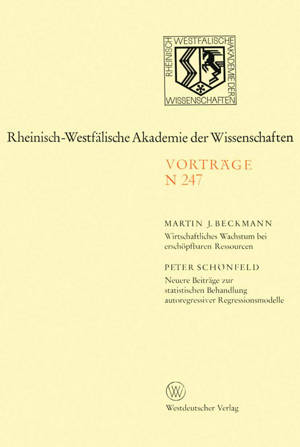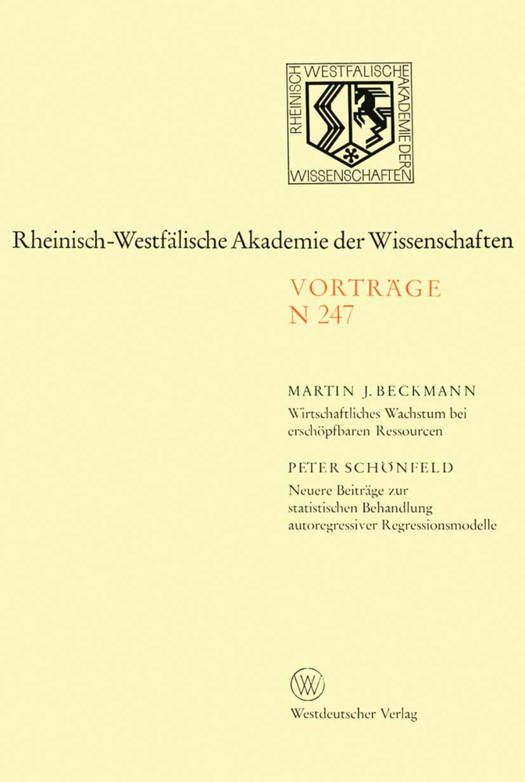
Door een staking bij bpost kan je online bestelling op dit moment iets langer onderweg zijn dan voorzien. Dringend iets nodig? Onze winkels ontvangen jou met open armen!
- Afhalen na 1 uur in een winkel met voorraad
- Gratis thuislevering in België vanaf € 30
- Ruim aanbod met 7 miljoen producten
Door een staking bij bpost kan je online bestelling op dit moment iets langer onderweg zijn dan voorzien. Dringend iets nodig? Onze winkels ontvangen jou met open armen!
- Afhalen na 1 uur in een winkel met voorraad
- Gratis thuislevering in België vanaf € 30
- Ruim aanbod met 7 miljoen producten
Zoeken
Wirtschaftliches Wachstum Bei Erschöpfbaren Ressourcen
Neuere Beiträge Zur Statistischen Behandlung Autoregressiver Regressionsmodelle
Martin J Beckmann
€ 54,45
+ 108 punten
Omschrijving
If production exhausts some resources and these are necessary in future production even though some substitution of producible resources is pos- sible, how should the available stocks of exhaustible resources be allocated to present and future production? The objective considered is to maximize the present value of the utility of current and future consumption. When production functions are Cobb-Douglas and the utility functions are logarithmic, the optimum decision rule has the simple form: use up the fraction l-e of the remaining amount of every exhaustible resource in every period. Here fl is the discount factor. Conversely if rates of use of exhaustible resources are given, then these imply a time rate of discount for future utility. Depending on e and on the rate of technical progress (assumed as exogeneous) a stationary state or even growth are possible. But rates of resource exhaustion above a critical level imply a steady decline and eventual extinction. La production epuisant certaines resources qui seraient indispensables a la production future bien qu'on puisse substituer a un certain degre, les resources productibles, comment faut-il assigner a la production presente et future, les stocks disponibles des resources epuisables? II faut resoudre ce probleme dans Ie but de porter au maximum, la valeur actuelle de l'utilite de la consommation courante et future.
Specificaties
Betrokkenen
- Auteur(s):
- Uitgeverij:
Inhoud
- Aantal bladzijden:
- 52
- Taal:
- Duits
- Reeks:
- Reeksnummer:
- nr. 247
Eigenschappen
- Productcode (EAN):
- 9783531082479
- Verschijningsdatum:
- 1/01/1975
- Uitvoering:
- Paperback
- Formaat:
- Trade paperback (VS)
- Afmetingen:
- 170 mm x 244 mm
- Gewicht:
- 104 g

Alleen bij Standaard Boekhandel
+ 108 punten op je klantenkaart van Standaard Boekhandel
Beoordelingen
We publiceren alleen reviews die voldoen aan de voorwaarden voor reviews. Bekijk onze voorwaarden voor reviews.











